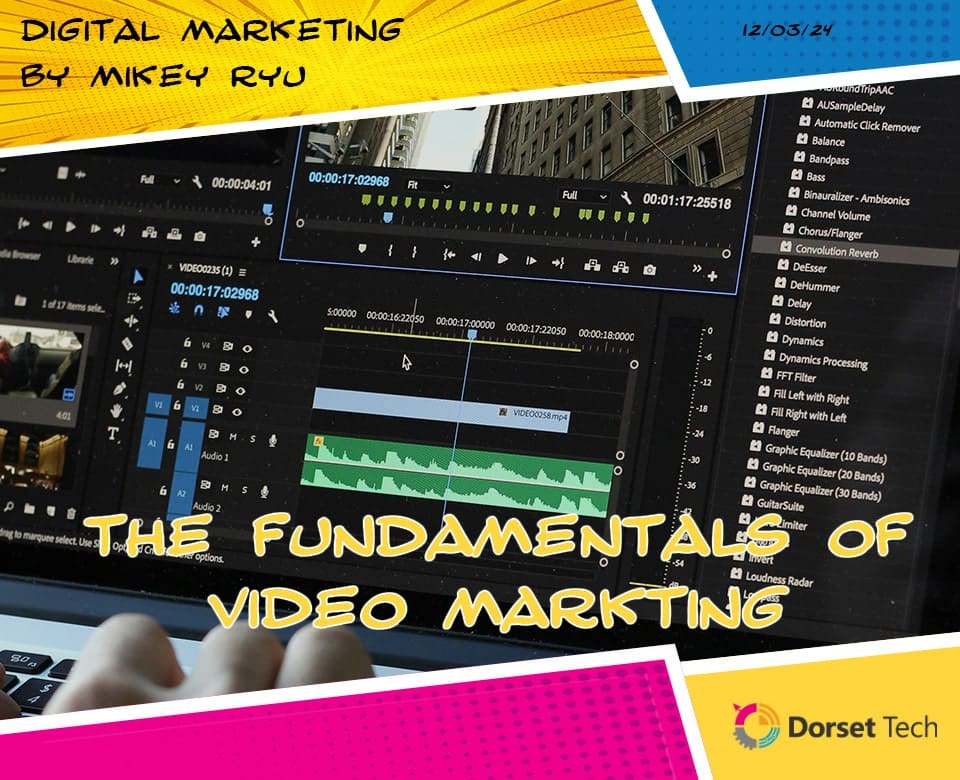
Unveiling the Fundamentals of Video Marketing
Video marketing has emerged as a powerful tool for businesses to captivate audiences, convey compelling messages, and drive engagement in today’s digital landscape. With the rise of video-sharing platforms and the prevalence of multimedia content consumption, businesses have unprecedented opportunities to connect with their target audience through captivating video content. In this comprehensive guide, we’ll explore the fundamental principles of video marketing and how businesses can leverage its potential to achieve their marketing objectives.
Understanding Video Marketing:
Video marketing involves using video content to promote products, services, or brands to a target audience. It encompasses a diverse range of video formats, including explainer videos, product demonstrations, tutorials, testimonials, vlogs, live streams, and more. Video marketing allows businesses to convey their brand story, showcase products or services, educate and entertain audiences, and foster meaningful connections with viewers.
Defining Objectives and Audience:
Before embarking on a video marketing campaign, it’s essential to define clear objectives and identify your target audience. Determine what you aim to achieve with your video content, whether it’s increasing brand awareness, driving website traffic, generating leads, boosting sales, or enhancing customer engagement. Understand your target audience’s demographics, interests, preferences, and pain points to create video content that resonates with their needs and aspirations.
Crafting Compelling Video Content:
Compelling video content is the cornerstone of successful video marketing campaigns. Focus on creating videos that are informative, entertaining, or emotionally engaging to capture and retain viewers’ attention. Start by developing a compelling narrative or storyline that communicates your brand message effectively. Invest in high-quality production values, including professional videography, editing, and sound design, to ensure polished and visually appealing content.
Choosing the Right Video Platforms:
Selecting the right video platforms to distribute your content is crucial for reaching your target audience effectively. Consider the strengths and audience demographics of different platforms, such as YouTube, Facebook, Instagram, LinkedIn, TikTok, and others. Tailor your video content and distribution strategy to each platform’s unique features, audience preferences, and engagement behaviours to maximize reach and impact.
Optimising for Search and Discovery:
Optimize your video content for search engines and discovery platforms to increase visibility and attract organic traffic. Conduct keyword research to identify relevant search terms and phrases related to your content. Optimise video titles, descriptions, and tags with target keywords to improve search engine rankings and discoverability. Leverage relevant hashtags and metadata to enhance your content’s visibility on social media platforms and video-sharing sites.
Encouraging Engagement and Interaction:
Foster engagement and interaction with your video content by encouraging viewers to like, comment, share, and subscribe. Include clear calls-to-action (CTAs) within your videos prompting viewers to take specific actions, such as visiting your website, signing up for a newsletter, or making a purchase. Respond to viewer comments and feedback to foster a sense of community and build relationships with your audience.
Measuring Performance and Iterating:
Regularly monitor and analyze key performance metrics to evaluate the effectiveness of your video marketing efforts. Track metrics such as views, watch time, engagement rate, click-through rate, conversion rate, and return on investment (ROI). Use analytics tools provided by video platforms to gain insights into viewer behaviour, content performance, and audience demographics. Based on performance data, iterate and optimize your video content and distribution strategy to enhance results and achieve your marketing objectives.
Staying Authentic and Transparent:
Maintain authenticity and transparency in your video marketing efforts to build trust and credibility with your audience. Be genuine in your messaging and storytelling, and avoid overly promotional or deceptive content. Disclose any sponsored or branded content clearly and conspicuously to ensure transparency and compliance with advertising regulations and guidelines. Establish your brand as a trustworthy source of valuable and reliable video content to foster long-term relationships with viewers.
In conclusion, video marketing offers businesses a dynamic and engaging way to connect with their audience, convey their brand message, and drive meaningful interactions. By understanding the fundamentals of video marketing and implementing strategic approaches to content creation, distribution, optimization, and measurement, businesses can harness the full potential of video to achieve their marketing objectives and stand out in the competitive digital landscape.





















